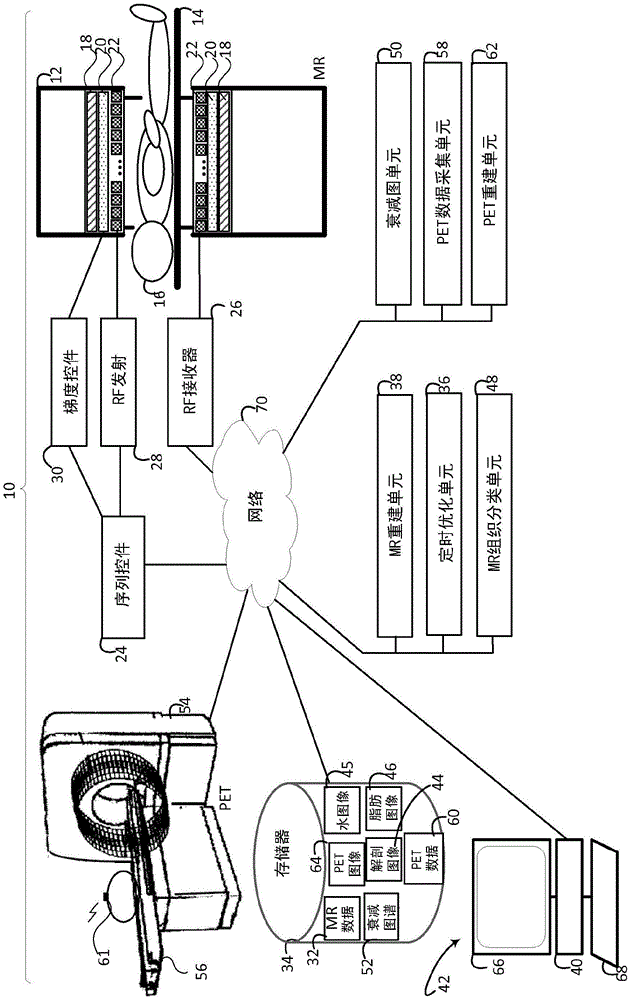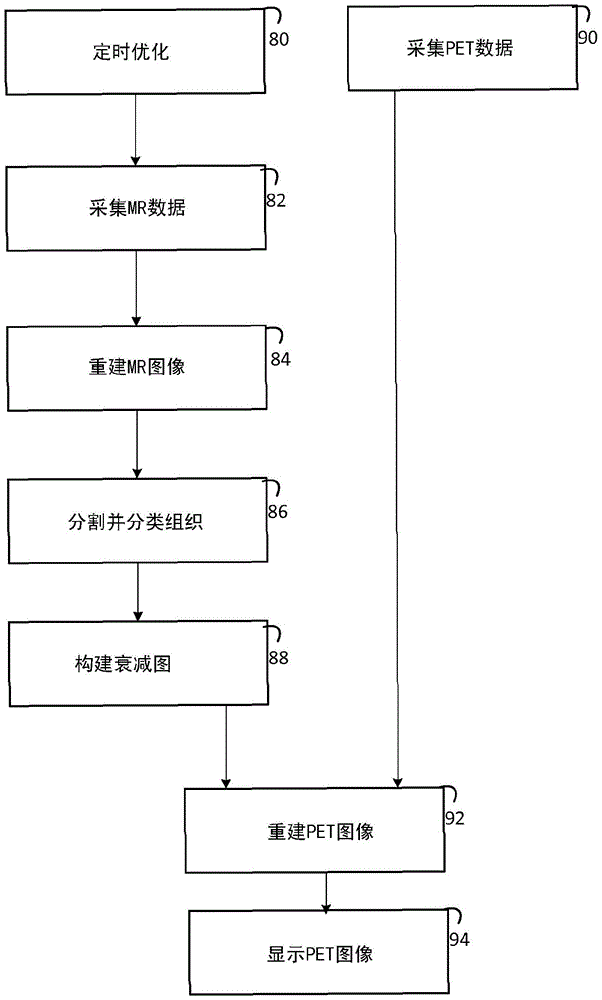Mr-based attenuation correction in pet/mr imaging with dixon pulse sequence
A pulse sequence and imaging technology, applied in the field of medical imaging, can solve the problems of tissue misclassification, long data acquisition time, etc., and achieve the effect of reducing echo time
- Summary
- Abstract
- Description
- Claims
- Application Information
AI Technical Summary
Problems solved by technology
Method used
Image
Examples
Embodiment Construction
[0027] refer to figure 1 , schematically shows an MR / PET system 10 with timing optimization and MR-based PET attenuation correction maps. System 10 includes a static B shown in partial cross-section 0 MR scanners (or subsystems) 12 of the main magnetic field, such as horizontal bore scanners, open system scanners, c-type scanners, vertical field scanners, hybrid scanners, and the like. The MR scanner includes a subject support 14, such as a horizontal bed or couch, which supports and moves a subject 16 into the MR scanner bore, a static main magnetic field, and a field of view during imaging. The subject support moves the subject to one or more locations that positions a predetermined anatomical portion of the subject within the field of view for imaging. The MR scanner 14 includes a main magnet 18 that generates a static main magnetic field (B 0 ), such as the horizontal main magnetic field. The MR scanner also includes one or more gradient coils 20 for applying gradient ...
PUM
 Login to View More
Login to View More Abstract
Description
Claims
Application Information
 Login to View More
Login to View More - R&D
- Intellectual Property
- Life Sciences
- Materials
- Tech Scout
- Unparalleled Data Quality
- Higher Quality Content
- 60% Fewer Hallucinations
Browse by: Latest US Patents, China's latest patents, Technical Efficacy Thesaurus, Application Domain, Technology Topic, Popular Technical Reports.
© 2025 PatSnap. All rights reserved.Legal|Privacy policy|Modern Slavery Act Transparency Statement|Sitemap|About US| Contact US: help@patsnap.com


